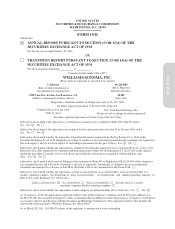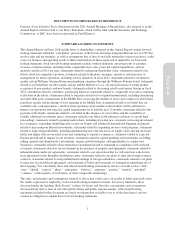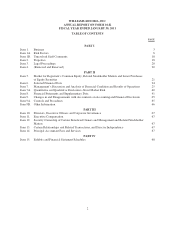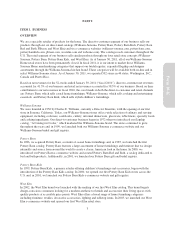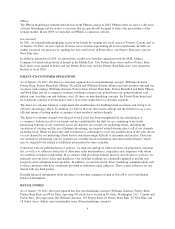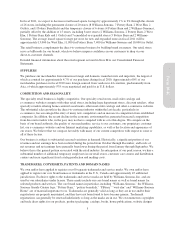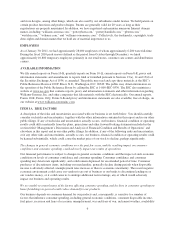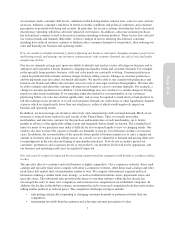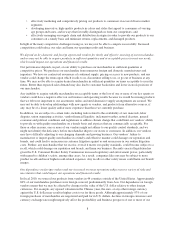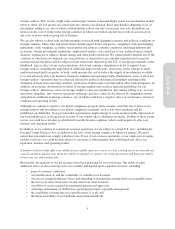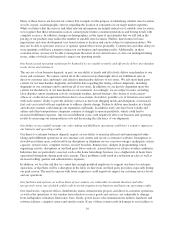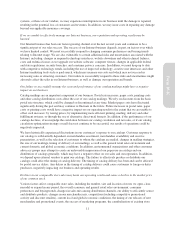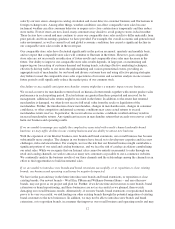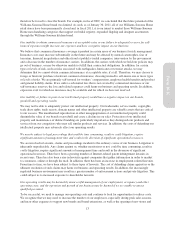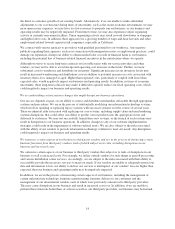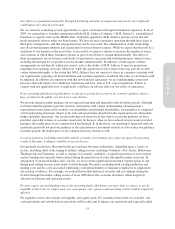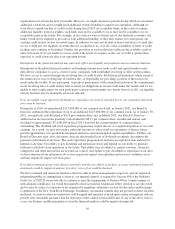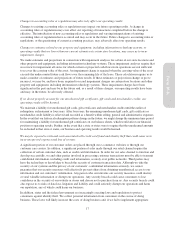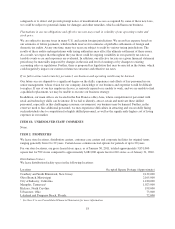Pottery Barn 2010 Annual Report Download - page 22
Download and view the complete annual report
Please find page 22 of the 2010 Pottery Barn annual report below. You can navigate through the pages in the report by either clicking on the pages listed below, or by using the keyword search tool below to find specific information within the annual report.• effectively marketing and competitively pricing our products to consumers in several diverse market
segments;
• developing innovative, high-quality products in colors and styles that appeal to consumers of varying
age groups and tastes, and in ways that favorably distinguish us from our competitors; and
• effectively managing our supply chain and distribution strategies in order to provide our products to our
consumers on a timely basis and minimize returns, replacements, and damaged products.
In light of the many competitive challenges facing us, we may not be able to compete successfully. Increased
competition could reduce our sales and harm our operating results and business.
We depend on key domestic and foreign agents and vendors for timely and effective sourcing of our merchandise,
and we may not be able to acquire products in sufficient quantities and at acceptable prices to meet our needs,
which would impact our operations and financial results.
Our performance depends, in part, on our ability to purchase our merchandise in sufficient quantities at
competitive prices. We purchase our merchandise from numerous foreign and domestic manufacturers and
importers. We have no contractual assurances of continued supply, pricing or access to new products, and any
vendor could change the terms upon which it sells to us, discontinue selling to us, or go out of business at any
time. We may not be able to acquire desired merchandise in sufficient quantities on terms acceptable to us in the
future. Better than expected sales demand may also lead to customer backorders and lower in-stock positions of
our merchandise.
Any inability to acquire suitable merchandise on acceptable terms or the loss of one or more of our key agents or
vendors could have a negative effect on our business and operating results because we would be missing products
that we felt were important to our assortment, unless and until alternative supply arrangements are secured. We
may not be able to develop relationships with new agents or vendors, and products from alternative sources, if
any, may be of a lesser quality and/or more expensive than those we currently purchase.
In addition, we are subject to certain risks, including risks related to the availability of raw materials, labor
disputes, union organizing activities, vendor financial liquidity, inclement weather, natural disasters, general
economic and political conditions and regulations to address climate change that could limit our vendors’ ability
to provide us with quality merchandise on a timely basis and at prices that are commercially acceptable. For
these or other reasons, one or more of our vendors might not adhere to our quality control standards, and we
might not identify the deficiency before merchandise ships to our stores or customers. In addition, our vendors
may have difficulty adjusting to our changing demands and growing business. Our vendors’ failure to
manufacture or import quality merchandise in a timely and effective manner could damage our reputation and
brands, and could lead to an increase in customer litigation against us and an increase in our routine litigation
costs. Further, any merchandise that we receive, even if it meets our quality standards, could become subject to a
recall, which could damage our reputation and brands, and harm our business. Recently enacted legislation has
given the U.S. Consumer Product Safety Commission increased regulatory and enforcement power, particularly
with regard to children’s safety, among other areas. As a result, companies like ours may be subject to more
product recalls and incur higher recall-related expenses. Any recalls or other safety issues could harm our brands’
images.
Our dependence on foreign vendors and our increased overseas operations subject us to a variety of risks and
uncertainties that could impact our operations and financial results.
In fiscal 2010, we sourced our products from vendors in 44 countries outside of the United States. Approximately
60% of our merchandise purchases were foreign-sourced, predominantly from Asia. Our dependence on foreign
vendors means that we may be affected by changes in the value of the U.S. dollar relative to other foreign
currencies. For example, any upward valuation in the Chinese yuan, the euro, or any other foreign currency
against the U.S. dollar may result in higher costs to us for those goods. Although approximately 97% of our
foreign purchases of merchandise are negotiated and paid for in U.S. dollars, declines in foreign currencies and
currency exchange rates might negatively affect the profitability and business prospects of one or more of our
8



